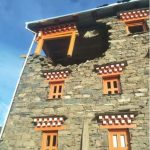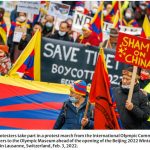By Novanita Sharma | The Hill Times | 6 March 2021
On the 10th of March 1959, the people of Tibet came out to the streets of Lhasa, the capital city of Tibet in the largest peaceful resistance against repression of their rights and the forceful occupation of their motherland by the Chinese Communist Government since 1950. The sea of peace-loving Tibetans outside the Potala Palace, Lhasa on this fateful day to assert their rightful claim for their beloved motherland questioned the freedom loving humanity about its responsibility. The imperialistic Communist Chinese government began to invade Tibet from 1950. The rise of Peoples Republic of China in 1949 was bound to bring inevitable changes in the political scene of Asia. Tibet with its strategic position called for immediate action from the rising expansionist ambitions of the Communist government of China. Under the leadership of Mao Zedong, the Chinese Communist government made swift entry into the polity of Tibet. For the militarily intimidating Red Army, Tibet was a very easy invasion. On 7th October 1950, the People’s Liberation Army invaded the Tibetan area of Chamdo. The large number of units of People’s Liberation Army quickly surrounded and outnumbered the representative miniscule Tibetan forces. Following the military invasion, in 1951 the Tibetan government and people were thrust upon with the 17-point agreement designed by the Chinese government which was signed by the Tibetan delegates representing the Tibetan government under duress, this agreement been later thwarted by the Dalai Lama and the Tibetan exiled government asserting its illegitimacy. Tibet came under effective rule of Peoples Republic of China from 1951 after the 17-point agreement. From 1951-1959 the Chinese Communist government chose not to implement the stringent social reforms in the Central Tibet region, the Kham areas of Tibet witnessed land reforms in full. Most lands were handed over from the nobleman and monasteries to serfs. The Tibetan Eastern Kham region was incorporated in Sichuan Province and the Western Kham was put under Chamdo military committee; rigorous land reforms took place in these regions. The trademark atrocities of the fascists of Communist Chinese government loomed large in these regions. The so-called socialist reforms and the ruthless repression of the Tibetan society slowly gathered unrest amongst the peace-loving Tibetan citizens. By 1956, there was unrest in Eastern Kham and Amdo, where land reforms were most rampant. Rebellions erupted and eventually spread to the Western Kham and U-Tsang. In 1956, the Tibetan Resistance movement began with isolated resistance to the rule of Communist Chinese government. The oppressive control of People’s Republic of China over the religious and cultural practices of Tibetans was threatening to their cultural and national identity. The suppression of their belief system and imminent threat to their reverend leader His Holiness the 14th Dalai Lama played significant role in the Tibetan uprising of 1959.
Read the full story here











